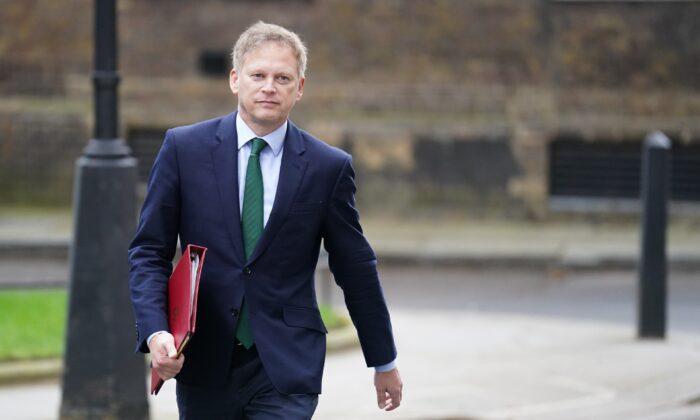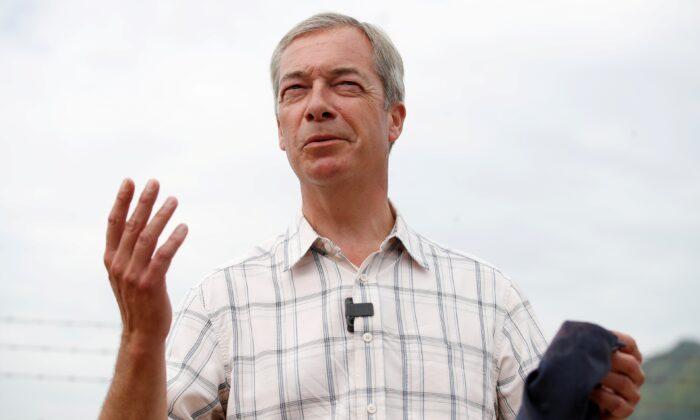Britain and the United States have pledged to work together to bolster energy independence and help their European partners end reliance on Russian energy.
Since Russian President Vladimir Putin launched the invasion of Ukraine on Feb. 24, 2022, European nations have reduced their imports of Russian oil and gas, leading to a shortage of supplies and unprecedented energy price rises.
Meeting U.S. Energy Secretary Jennifer Granholm in London on Monday, UK Energy Security Secretary Grant Shapps said that greater energy independence has become a necessity for the UK in the wake of the Russian invasion.
He said this would mean “powering Britain from Britain” by switching to home-grown sources including nuclear and renewables.
Shapps and Granholm said they will work together to undermine Putin’s ability to fund his war through Russian energy exports, and to support their European partners in their efforts to end the reliance on Russian energy.
Shapps said: “Secretary Granholm and I stand shoulder to shoulder in our unending support for Ukraine, and in ensuring that neither Putin nor any tyrant ever think they can hold the world to ransom through their energy supply.
“The war has shown the UK, the U.S., and countries the world over the need for ever greater energy independence, fuelled by moves away from fossil fuels and towards home-grown sources like renewables and nuclear. Today I’m pledging to deliver that energy independence—backed by my ambition for lower wholesale electricity prices in the longer term.
“This will also open up opportunities for UK and U.S. companies to work together at the cutting edge of these technologies while also strengthening the historic ties of cooperation between our two countries.”
Granholm said the U.S. government is “keenly aware that remaining overly reliant on fossil fuels puts our energy security at risk and that the solution lies in diversifying our fuel sources through the deployment of clean energy.”
Nuclear Plants
The UK government has sped up the development of nuclear power since the war in Ukraine broke out.France’s EDF Energy, which is building the Hinkley Point C reactor in Somerset, is the majority partner behind the £20 billion ($24 billion) project, in which the Treasury will invest £700 million ($840 million).
The Chinese state-owned China General Nuclear Power Group (CGN) originally had a 20 percent stake in Sizewell C. But Shapps said the Chinese firm had been “bought out of the deal on Sizewell” and was “no longer involved” in the project.
China’s involvement in nuclear power in the UK dates back to an agreement endorsed by then-Prime Minister David Cameron and Chinese leader Xi Jinping in 2015.
Liquefied Natural Gas
Despite the U.S. and UK governments’ stated objective of moving towards renewables, the United States has significantly ramped up its export of liquefied natural gas (LNG) to the UK and the European continent in the past year.According to data from Kpler, during the first 11 months of 2022, U.S. LNG exports to Europe rose by more than 137 percent from the same period in 2021, supplying more than half of Europe’s imported LNG, and helping the region weather a more than 54 percent plunge in piped shipments from Russia.
The United States will strive to export at least 9–10 billion cubic metres of LNG over the next year via UK terminals, more than doubling the level exported in 2021, it said, adding that it will be “good for both UK and European partners.”
According to the UK government, the initiative has an “immediate goal” of stabilising energy markets and reducing demand, while seeking to build long-term resilience by accelerating the shift to “clean” alternatives.
This will involve promoting nuclear fuels as a “safe” and “reliable” part of the transition, expediting the development of clean hydrogen, and driving international investment in offshore wind and carbon capture.





